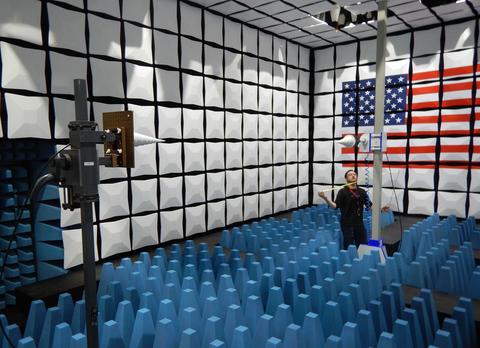NASCTN Projects

NASCTN projects follow the NASCTN Framework, an open, transparent, and comprehensive approach to developing scientifically based test plans, facilitating access to member test ranges and laboratories, protecting controlled information, validating test results before findings are reported, and disseminating results.
Active Projects:
CBRS Sharing Ecosystem Assessment
(proposed by Defense Spectrum Organization DSO)
The objective of this project is to collect the data required for DISA DSO to ascertain the effectiveness of the sharing ecosystem between CBRS systems as managed by Spectrum Access Systems (SASs), and DoD systems as monitored by Environmental Sensing Capabilities (ESCs).
Completed Projects:
AWS-3 LTE Impacts on AMT
(proposed by Edwards Air Force Base)
This test plan proposal builds on and extends a previous NASCTN project that measured the out of band (OoB) LTE evolved Node B (eNB) and UE AWS-3 emissions into adjacent L and S (2200-2395 MHz) frequency band AMT systems. While the previous test measured general LTE OoB emissions, this project specifically measures the impact to AMT systems with an emphasis at the 1780 MHz boundary between LTE and AMT systems.
Characterizing UE Emissions
(proposed by Defense Spectrum Organization DSO)
The project's objective is to characterize the emissions of User Equipment (UE) to empirically estimate parameters, sensitivity, and uncertainty of the variables influencing the level of potential interference to DoD systems.
Out-of-Band Emissions Measurements of LTE Devices Operating in the AWS-3 Band
(proposed by Edwards Air Force Base)
This project will develop the test processes and perform out-of-band emissions measurements of LTE systems that will be operating in the AWS-3 band so that DOD can mitigate potential interference effects on their aeronautical mobile telemetry (AMT) systems that are used at DOD test ranges.
Impact of LTE Signals on GPS Receivers
(proposed by Ligado Networks)
The project's objectives are to develop a repeatable, calibrated, and well-documented test methodology to investigate the impact of adjacent-band LTE transmissions on GPS receivers operating in the L1 frequency band and to collect data on a representative subset of available GPS devices in order to validate the proposed test methodology.
Follow-on and Related Research
Completed Research Projects:
Advanced Waveform Co-Channel Interference
The project resulted in the development of a test methodology to measure and collect co-channel interference effects between advanced waveforms of varying complexity and LTE uplink traffic. The focus was on evaluating the response of LTE uplink to interference using statistically rigorous analysis of LTE system provided and external measurands. A well-controlled, conducted experiment was carried out to verify the test methodology. The effort demonstrated the ability to measure interference under various implementations of a frequency hopping interferer. This work is directly applicable to deployments of modern communications systems in spectrally congested environments such as the AWS-3 band.
Classification of 3.5 GHz Spectrograms
This project is undertaking additional analyses of data collected by the completed NASCTN “Waveform Measurements of Radars Operating in the 3.5 GHz Band” project to more fully characterize observed emissions in the 3.5GHz band. Specifically, methods from machine learning and data mining are being applied to classify captures, estimate channel occupancy statistics, estimate channel characteristics, and characterize recorded emissions that could complicate ESC detection. The outcomes of this project will inform spectrum regulators and ESC developers concerned with commercial access to the 3.5 GHz band.
Waveform Measurements of Radars Operating in the 3.5 GHz Band
The focus of this project is to develop test methods and perform measurements necessary to characterize the waveforms of radars that operate in the 3.5 GHz band. This effort is coordinated with the DOD, and the results of this project will support the spectrum regulators as they develop a certification process for spectrum access systems (SAS) and the associated environmental sensing capability (ESC) that may be deployed in this frequency band.
Interference Tests at Room Temperature Applied to Deployed Low-Noise Receivers
This project considers the influence of room temperature test environments on estimating interference power levels in equivalent deployment conditions. The study developed an analytical regression correction model of estimating adjusted interference response from room temperature tests for use in realistic deployment antenna noise environments where high entropy interference sources or atmospheric effects may increase the noise level. The analysis was based on test results of the total noise experienced by a global positioning system (GPS) receiver system exposed to various deployment antenna noise temperatures and antenna efficiency performance.

